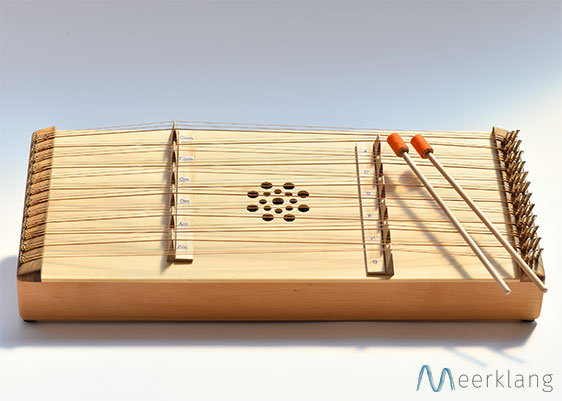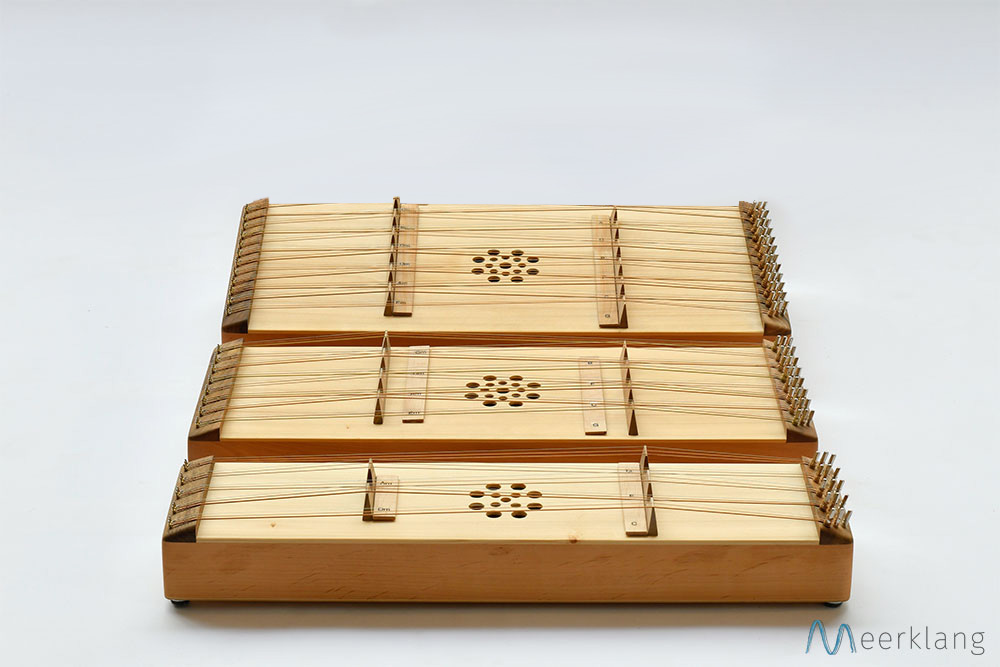Harmony-Tambourin
Enormous sonority and easy play
The Harmony-Tambourine originally comes from France, where it was used in the Middle Ages as an accompaniment instrument, similar to a hammered dulcimer or a chorded zither. Each chord is made up of three strings which are hit with a mallet, a plectrum or the fingertips.
The Harmony-Tambourin is ideal for people who like singing but up to now have not had a simple accompaniment instrument for that.
Sound
The Harmony-Tambourin has an enormous fullness of sound and is extremely simple to play. It is both a plucked string instrument and a percussion instrument at the same time. No matter how it is played, it always produces a deep, wide, very warm and all-encompassing sound.
As with all Meerklang instruments, it sounds very good in combination with other classical instruments.
Applications
The Harmony-Tambourin is suited to accompanying songs with chords, similar to a guitar. And yet it is much simpler to play because you only have to hit the chords and don’t have to change the fingering as with guitar chords.
It has proved very useful as an accompaniment instrument in school music-making, because both children and teachers can learn to accompany songs with it in a short time.
During the Jekits project the string tambourine was used very successfully in many schools throughout Germany.
Versions
The instrument is available in three different sizes; with 5, 8, or 11 chords:
| Lenght | Width | Height | Chords | String count |
|---|---|---|---|---|
| 66 cm | 16 cm | 7 cm | 5 (C/F/G/Am/Dm) | 15 |
| 66 cm | 24 cm | 7 cm | 8 (C/F/G/B/Am/Em/Dm/Gm) | 24 |
| 66 cm | 30 cm | 7 cm | 12 (C/F/G/B/D/A/Am/Dm/Em/Gm/Cism/Fism) | 36 |




